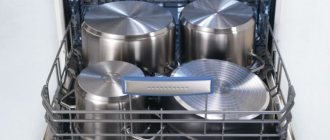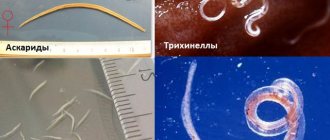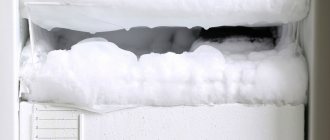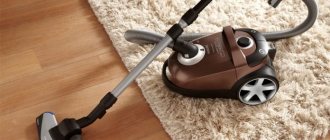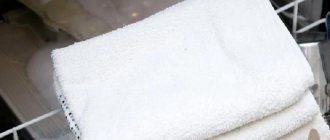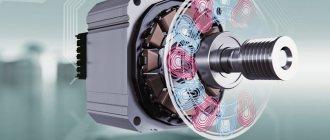However, people often use rather old dishes that were born much earlier than the era of dishwashers - and, of course, there are no marks on them. Fortunately, even antique utensils do not always have to be washed by hand - it all depends on the material from which it is made.
- Strained glass. All glass items can be safely washed in the dishwasher - baking dishes, glasses, salad bowls and others.
- Heat-resistant plastic. Food containers, microwaveable dishes and reusable bottles can be washed in the dishwasher unless they are marked with a prohibition sign. Also, plastic dishes often indicate the maximum temperature at which they can be washed.
- Ceramics, porcelain and faience without gilding or patterns. Ceramic is also a very durable material, but gilded borders and some designs (especially hand-applied over glaze) may not withstand heavy rinsing and detergent and may simply come off. However, plain ceramic plates can be safely washed in the dishwasher.
- Silicone. Baking and dessert dishes, spatulas and spoons are all machine washable. This also includes silicone toys for pets and children, pacifiers and bottles without stickers.
- Stainless and enameled steel. Pots, ladles and stewpans made from these materials can easily withstand machine washing. This also applies to cutlery and oven parts (lids, racks, baking sheets).
- Home Appliances
How to choose a dishwasher without standing at the sink every day
Knives and tools with sharp edges
Sharp objects are contraindicated in the dishwasher.
Firstly, you can forget or simply not know about cutting objects, if you were not the one who put the dirty dishes, and get seriously injured. Secondly, such washing can ruin good appliances. Strong detergents, when used frequently, will dull the sharp edges of expensive knives over time. This is especially true for ordinary housewives who are not often puzzled by sharpening. Knife handles can be damaged in the dishwasher, and carbon steel blades can rust over time.
Thirdly, carelessly placed knives can simply damage the parts of the dishwasher, which will lead to breakdown.
All this, of course, does not apply to ordinary table knives, but their steel inevitably becomes dull over time due to frequent washing.
What can be washed in PMM under certain conditions
Some cutlery can be washed by choosing the right temperature and a suitable product:
- Teflon frying pans, saucepans. The original Teflon brand favors automated care. Incompetent sellers pass off any non-stick coating as Teflon. Therefore, before loading your favorite frying pan, read the instructions and study the markings. Symbols on the dishes help determine the correct use, care, and storage.
- Knives. If the model is equipped with a special compartment for knives, you can wash it without problems, otherwise the sharp blades will damage the basket, become dull, and the wooden handles will become deformed.
- Baking trays - it is advisable to load them into the lower section, suitable in size. First remove burnt food debris and grease so as not to clog the pump and filters.
- Filter jug. Jug “Barrier”, “Aquaphor”, and other brands refresh at a temperature of about 40 degrees, preferably without drying.
- Hood filter - the filter grille is not made of aluminum alloy.
Utensils made from unsuitable metal
The only metal that is 100% dishwasher safe is stainless steel. It is difficult to damage and will not rust.
Cookware made of cast iron or carbon steel quickly rusts from water. That is why it is recommended not to wash cast iron cauldrons and frying pans at all, but simply wipe them thoroughly with a cloth. Enameled cookware can be washed in the dishwasher, but over time this can also damage the enamel.
Don't put aluminum cookware in the dishwasher: it will become dull and blackened, with dull white dry spots. Aluminum is one of the softest and most “responsive” metals; it reacts not only with alkalis and acids, but also with water. To prevent this, manufacturers coat it with a protective oxide layer. But dishwasher detergents contain phosphates, which can destroy the coating. This does not make the food harmful, and the dishes can be used, but they will look unsightly and will last less.
Metals that are prone to tarnishing (copper and brass) are also best not used in the dishwasher. At a minimum, they will lose their shine when exposed to harsh detergents.
Do not put non-stick pans in the dishwasher. Residues of food can be easily removed from such a surface with a regular damp sponge, and the non-stick layer can be easily damaged in a machine.
There are no markings on the container
It's rare, but sometimes plastic utensils really don't have any markings. You will have to act, evaluating the material yourself. Thick, elastic, durable plastic will probably easily withstand automatic washing. As a rule, they are made from such material:
- plastic containers for microwaves;
- Bakeware;
- ice trays;
- pencil holders;
- baskets for laundry, powder, etc.;
- glasses for toothbrushes;
- soap dishes;
- flower pots;
- hard plastic toys (Lego);
- various filters.
If you are not sure whether the plastic will withstand washing, try setting the delicate mode and placing the item in the PMM as high as possible, away from the heater. If you have a lot of plastic items and they are small, it is better to put them in a laundry bag for washing to prevent spillage.
Important! Washing disposable tableware, as well as plastic packaging for cakes, etc., in the PMM is strictly prohibited.
Which ceramics withstand automatic washing better?
The manufacturer is required to place a symbol on the packaging explaining whether the product can be washed in the dishwasher or not. If there is no such image, then it is better not to give preference to such sets of dishes.
We recommend: How to replace dishwasher salt - available options for acceptable analogues
It is best to choose ceramics that have a layer of glaze applied on them. This type of coating provides good protection against chemicals, water and high temperatures. Thanks to it, pots and plates are more likely to last longer and will not damage equipment. In addition, the protective layer prevents the porous clay from absorbing chemicals, so eating from such dishes is much safer, and it will not smell unpleasant.
It is better to choose ceramic products that were made no more than 15–20 years ago. Old cookware is usually not as durable.
Dishes from certain brands withstand washing in a machine better:
- Nikko is Japanese porcelain ceramic, well protected by a durable layer of glaze.
- Narumi is handmade ceramic that is resistant to high temperatures.
- Royal Bone and Fine China is a strong ceramic cookware that contains aluminum.
Properly selected dishes are unlikely to break during automatic cleaning.
How to properly wash ceramic dishes
Main rules of care:
- After washing, the surface not covered with enamel must be wiped dry, otherwise the moisture will not evaporate and will penetrate into the dish during cooking.
- To remove the smell from ceramics, you need to soak the dishes for a few minutes in cold salted water and then wash them well.
- If possible, you should store washed dishes outdoors; you should also avoid placing plates or mugs on top of each other. If you don't have space, you need to place napkins between the plates and only then stack them on top of each other. Otherwise, there is a risk of scratching the top layer of objects.
- Do not use metal or abrasive sponges when washing, as they can damage the top protective layer of the dishes. For the same reason, it is advisable to remove the rings from your hands when washing.
- Do not soak dishes in hot water - this may ruin their design.
- Ceramics are sensitive to sudden temperature changes, so immediately after cooking you should not place the dishes under cold water; first you need to let them cool.
- Coffee stains from ceramics can be easily removed with a cotton swab dipped in vinegar.
- To restore the whiteness of the dishes, you need to walk over them with a soft cloth dipped in tartaric acid.
Types of ceramic tableware
In general, the concept of “ceramic cookware” is very broad. It includes a variety of types and models of kitchen utensils.
The most common types of ceramic tableware:
- Porcelain - created from white clay, is light in weight, and has a beautiful appearance. This is a heat-resistant cookware that is well resistant to various substances. When lightly striking the surface of the porcelain, a high, clear sound can be heard.
- Earthenware - also made from white clay, but it has less strength and heat resistance. This is due to the lower firing temperature.
- Terracotta - made from red clay, after firing it is rarely covered with glaze, so its texture can be different - fine, partially polished, coarse-grained.
As for the models, they are as follows:
- tureens and pots ;
- serving plates ;
- gravy boats;
- spice utensils;
- baking dishes;
- cocotte makers;
- salad bowls and bowls ;
- cups;
- sugar bowls;
- teapots and coffee pots;
- fondue;
- plateau vases.
Answers on questions
Having collected all the readers’ questions related to the topic, we answered in detail the most interesting and relevant ones.
Question: Can Teflon frying pans be washed in the dishwasher?
Answer: The non-stick properties of Teflon frying pans may be impaired after 2-3 washes in PMM. Studying the forums of housewives, we came to the conclusion that some have been calmly washing such dishes in a machine for years, while others complain that they have already “killed” several frying pans, despite the permission sign. It's a matter of the quality of the frying pan and the aggressiveness of the detergents.
Question: Can the electric kettle be washed?
Answer: Yes, manually. To avoid damaging the electrical appliance, rinse the kettle with warm water under the tap.
Question: Can a Barrier or Aquaphor jug be machine washed?
Answer: Yes. Select a temperature cycle for washing the jug up to 40 degrees.
Question: I want to wash the steamer without using my hands. Will it spoil?
Answer: Depends on the material of the steamer. An aluminum container will deteriorate, but a plastic steamer has no contraindications.
Question: I was planning to sterilize jars in the dishwasher. Never tried. What mode should I set?
Answer: If there is no “can sterilization” function (in some Bosch models), select a temperature setting of at least 60 degrees.
We hope that our tips will be useful to you. Happy washing experiments.
How to put pans in the dishwasher
Placing pans in the dishwasher must follow certain rules. Products are usually loaded into the bottom tray. How exactly to place kitchen utensils depends on the design of the dishwasher. In some cases, the products are placed strictly vertically, in others they are placed in the unit at a slight angle or placed with the bottom up. The most convenient location can only be determined experimentally.
If the frying pan is equipped with a removable handle, then before washing it is better to disconnect the latter and place it in an automatic machine separately. Products with non-removable elements are positioned so that they overlap each other as little as possible.
When washing pans in a machine, it is recommended to load the unit only halfway, otherwise the plates on top may remain dirty
How to clean pans in the dishwasher
Dishwasher cleaning products come in several varieties. Powders, tablets, liquids and special capsules are used to wash dishes, pots and pans.
Kitchen utensils with a special coating should not be exposed to abrasive influences. Therefore, it is not advisable to use powder products in a machine - the smallest particles can leave microscopic scratches on the surface of the pans. Even if they are not visible to the naked eye, over time the defects will begin to have a negative impact on the performance characteristics of the utensil.
Liquid products for machines are considered the best. They are suitable for all dishes, including pans, silverware and sensitive china. Gels cope well with dirt and do not leave behind any damage, dissolve perfectly in water and soften its composition. There are no streaks when using liquid products on pans and plates.
Attention! Do not put regular dishwashing gel into the dishwasher. Only specialized drugs are allowed to be used.
When purchasing a detergent for a machine, you should also familiarize yourself with its composition - it should be as neutral as possible. Alkalies should not be used to clean pans.
Can pans be washed in the dishwasher?
The dishwasher is suitable for more than just washing plates, cups and cutlery. You can load large utensils into it, including baking sheets, pots, saucepans and frying pans.
It should be taken into account that the material of the dishes must be resistant to high temperatures and cleaning agents. Dishwashers do not harm ceramics, enamel items, stainless steel, plastic and glass. But some frying pans in an automatic unit may suffer if they are made of highly sensitive material.
What are homemade dishwasher substitutes made of?
The key components are surfactants that easily break down fat. All other components are aimed at enhancing the splitting effect, extinguishing foam, aromatization, uniform dissolution and preservation. Special products may contain acids, bleach, sodium silicate, which resists corrosion, brighteners, enzymes, thickeners and much more.
Knowing the composition, you can independently prepare a mixture for washing dishes in PMM. For what? It is possible to adjust the percentage of components, achieving maximum harmlessness. Homemade preparations are prepared based on:
- Soap;
- Citric acid;
- Boers;
- Lye;
- Mustards.


